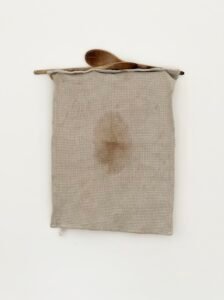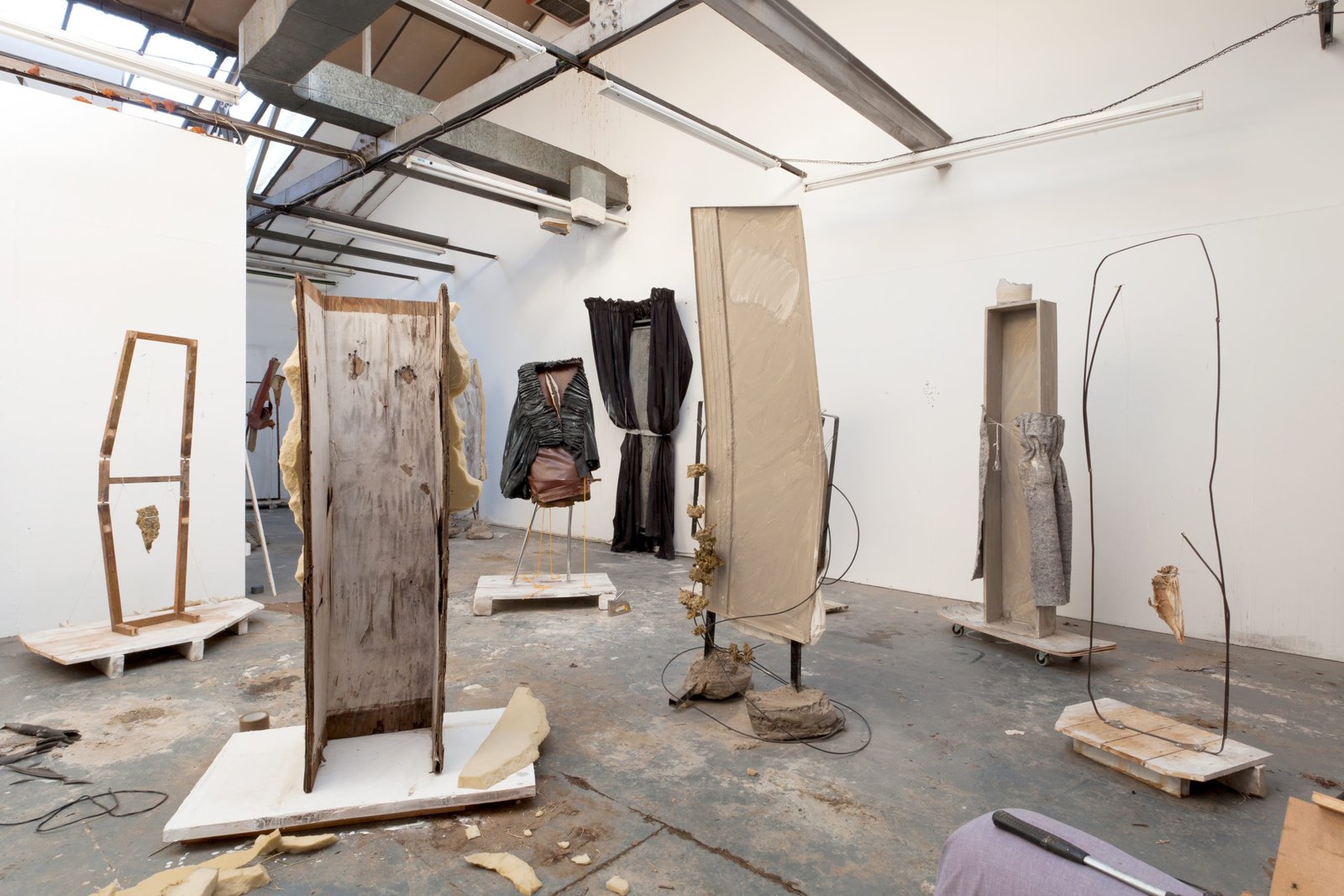
Linda Aloysius: Photographing ‘Teen’ outside Tate Modern, 2019.
Bio
Linda Aloysius works intimately and intensely to hand-build sculptures known as my ‘New Model Healers’ (formerly New Model Army 2011-2025) with related paintings, drawings, photographs and different kinds of texts. She works with found, flattened and fragmented natural objects and materials to engage her overlapping interests in nature, internal and external landscapes, trauma and healing, the body, temporality and space.
Aloysius’ approach challenges established conventions and parameters of art-institutional(ised) structures and spaces. She creates ‘Fieldworks’ – unauthorised, site-specific ‘exhibitions’ which may or may not have a human audience – in overlooked spaces, subsequently exhibiting, publishing or presenting different elements of the original ‘Fieldworks’ in galleries, museums, publications and other spaces with a view to generating new values.
Recent art and research exhibitions and presentations include with Feral Art School (2025), John Moores Painting Prize, Liverpool (2023), Fruitmarket, Edinburgh (2023), Henry Moore Foundation (2023), The Foundling Museum London (2022), Tate Modern (2020), Credit-Suisse London (2019), Glasgow University with Girlhood Gang (2019), Durham University (2018), CSM, London (2018), MAAT, Lisbon (2017).
Her work is held in private collections.

Egg: 19, Married, Then Pregnant, 2023
Commentary
In the 2023 John Moores Painting Prize, the longest running painting competition in the UK, one of the pieces selected for exhibition was made by Linda Aloysius. Titled The First Painting in History to be Recognised by a Public Museum as Painted by a Working-Class Single Mother Artist, the work consisted of a used cotton tea towel hanging off two wooden spoons. In submitting the tea towel, the artist proposed there was a painting of her invisible labour in the household stains picked up by the cotton; a portrait made not in the studio, but in the home.
Gabriella de la Puente and Zarina Muhammed (aks The White Pube), Poor Artists, Particular Books, p. 88, 2024
‘Some raise a smile, like Linda Aloysius’ ‘The First Painting in History To Be Recognised By a Public Museum as Painting By a Working-Class Single Mother Artist’. It puts pressure on the museum by simply existing, whether it’s good or not. And that act builds a relationship between the viewer, the artist, and the museum. Whatever you walk away thinking, you’ll have probably spent a moment to put yourself on one side of the argument.’ – Patrick Kirk-Smith, Art in Liverpool,com, Review: John Moores Painting Prize 2023, October 12, 2023
‘They are delightful as somehow distinct and vivid personalities come through the unpromising materials…they reminded me of Miró’s characteristic Personnages…’ Duncan Macmillan, Art Critic, Art Historian and Writer, Professor Emeritus of the History of Scottish Art at the University of Edinburgh. The Scotsman, 6th March (Updated 7th March), 2023.
‘That materials from brown paper to concrete are used, via degraded or ageing foam spilled from old seating, heightens the sculptures’ serious play with vulnerability and permanence, and dramatizes the claim on physical and cultural space they make. The metaphorical potential of this way of working is considerable, and the control of the judgments that have been made (especially the complexity with which elements and relationships are offered as available to be ‘read’ or not), make encounters with these works compelling. Materiality, degree of lean and height are all richly suggestive and sophisticated workings through of the tradition of the assembled sculpture to be experienced by a circumambient spectator, and also powerful reworkings of this tradition in their calculated use of flat forms as part of a many dimensioned encounter. They speak eloquently to a context in contemporary art that could be represented by the names of, for example, the work of Sarah Lucas, Rebecca Warren or Michael Dean. This brief account can only begin to suggest the achievement of the group of works shown, and their success in communicating complex feminist understandings and solidarities…’ – Ian Hunt (Goldsmiths) and Dr Alexandra Kokoli (Middlesex), Examiners’ Joint Report: Practice-led PhD Fine Art, July 20th, 2017
‘…the quick of recovery, the recognition of the rich hidden force that lies beyond the poverty of gendered display and disguise. This is the nub of Aloysius’ work: the relief at detecting an obscured, inner, elegant whole. A stance. What survives in long-standing.’ – Cherry Smyth, Poet, Writer and Art Critic: To Keep Standing, 2017
‘…a standing army – no reclining nudes here – of 14 life-size women, who assert themselves with considerable vim, cartoonish individuality and not a little well-aimed vulgarity against the historically male zones of the building industry (in which Aloysius has herself worked) and monumental statuary. The fun is in the wittily economical spontaneity of that deconstruction. The opening salvo, which combines concrete high heels with a cement bag head-come-cover in mocking reference to a term of abuse which might be shouted from a scaffold, seems to be heading out of the gallery to admonish any such taunters.’ – Paul Carey-Kent, Artist and Curator, Paul’s Art World, 31st March, 2012

Linda Aloysius: Studio View, 2012.

Linda Aloysius: F IS FOR FRAGMENT, Performance V22, 2016
